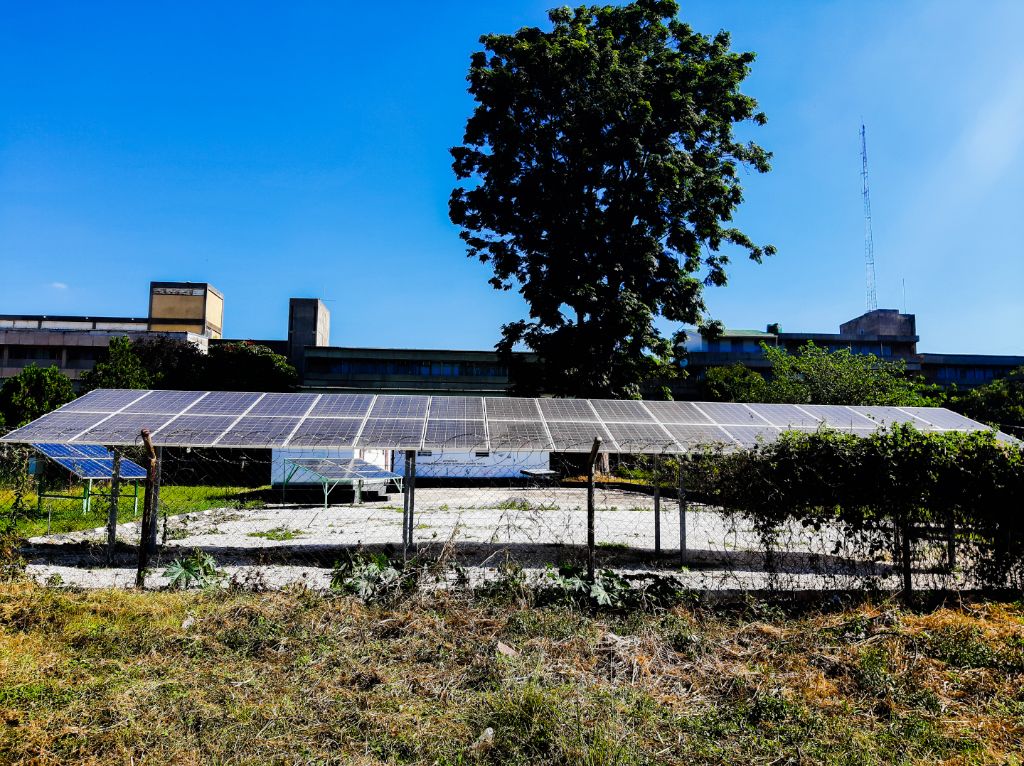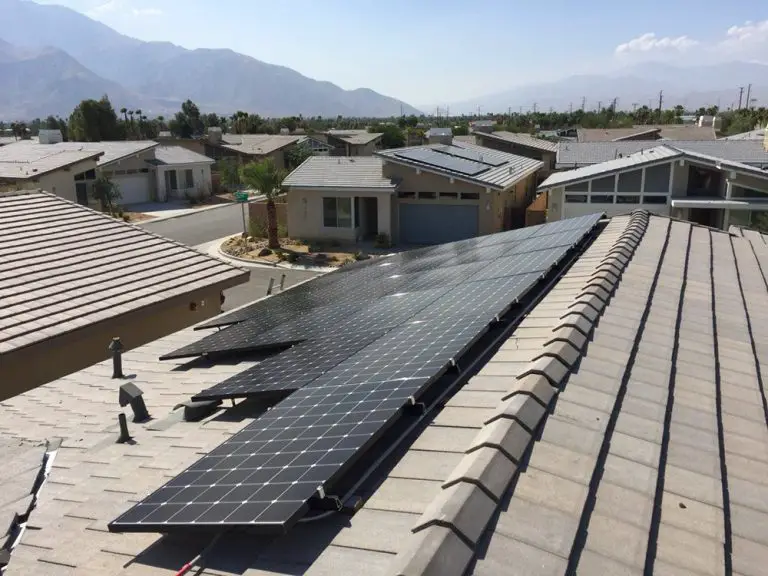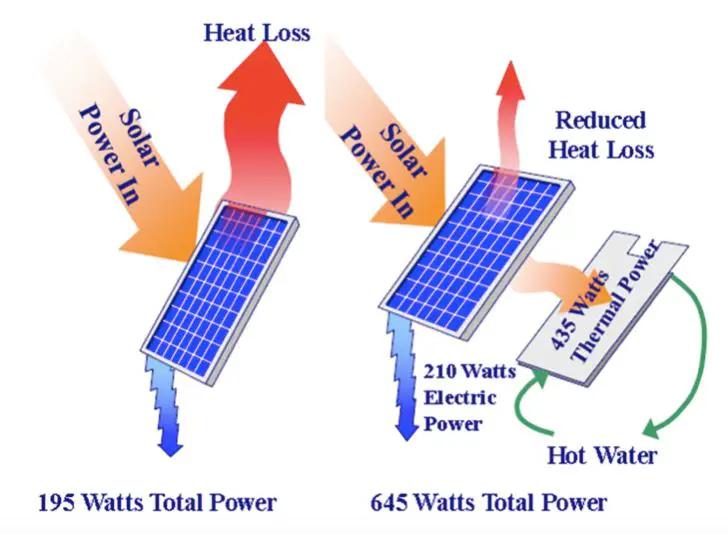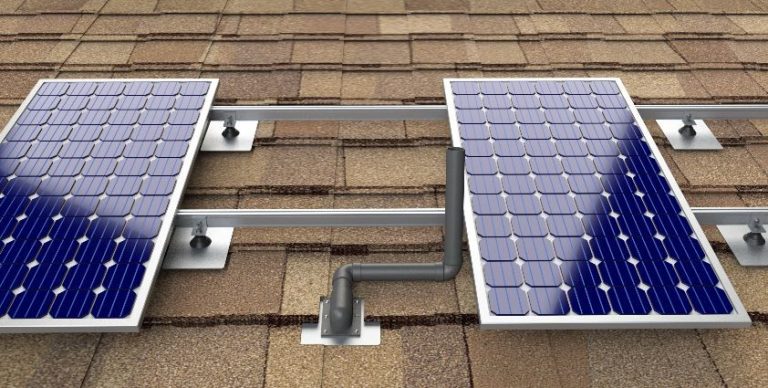What Type Of Energy Transformation Is A Solar Panel On The Roof Of A House?
What is a Solar Panel?
Solar panels are devices that convert sunlight into electricity. They are composed of solar cells, which are made from materials like silicon that absorb photons from sunlight and release electrons. The solar cells are connected together to form modules or panels.
When sunlight hits the solar cells, the photons are absorbed by the semiconductor material, causing electrons to be knocked loose from their atoms. This generates a flow of electricity in the cell. The electrical current is then collected by wiring and flows to your home’s electrical panel and appliances.
The key components in a solar panel include:
- Solar cells – made from semiconductors like silicon that absorb sunlight and convert it into electricity.
- Encapsulant – protects the solar cells from environmental damage.
- Tempered glass – provides structural strength and protection from elements.
- Aluminum frame – provides rigidity and durability.
- Junction box – collects the generated electricity and connects to cables.
These components are assembled into a complete solar panel module that can be installed on rooftops or other structures.
Solar Panels and Energy Transformation

Solar panels transform solar energy from the sun into usable electrical energy through the photovoltaic effect. The photovoltaic effect refers to the creation of a voltage or electric current when solar radiation hits the surface of a photovoltaic material like silicon.
Specifically, photons from sunlight excite electrons in the solar cells of a solar panel. This excitation causes the electrons to break free from their atomic bonds, enabling them to flow through the material and produce electricity. The photovoltaic effect generates direct current electricity from the solar radiation, which can then be used to power electrical devices or fed into the grid.
Solar panel systems contain photovoltaic cells made up of one or two layers of a semi-conducting material, usually silicon. When sunlight shines on the solar panel, photons from the sunlight are absorbed by the semi-conducting material, transferring their energy to electrons in the material’s atoms. This frees the electrons to move through the material, producing electricity. The electricity generated can then be used to power electrical loads, fed into batteries, or distributed to the electricity grid.
In summary, solar panels utilize the photovoltaic effect to absorb photons from sunlight and excite electrons to generate usable electric current. This transformation from solar energy to electrical energy allows solar panels to provide renewable, clean electricity from the power of the sun.
Installing Solar Panels on Houses
Installing solar panels on residential homes continues to increase in popularity as the technology becomes more affordable and accessible. The process involves carefully mounting the solar panels, wiring them together, and connecting them to your home’s electrical system.
The ideal location for solar panels is on south-facing sections of the roof angled anywhere from 15-40 degrees depending on latitude. Pitched roofs work best, while flat roofs can use tilted mounts. The roof must receive full sun exposure throughout the day, with no shading from trees or other buildings.
After the solar panels are mounted and secured, they need to be wired together into strings and connected to an inverter. The inverter converts the panels’ DC output into AC current that your home can use. All wiring and electrical connections must meet local building codes and be performed by licensed solar installers. Finally, the system ties into the home’s electrical panel to send power where needed or add excess energy back to the grid.
Properly installing solar panels on residential rooftops takes expertise, but can provide clean renewable energy for decades when done right.
Benefits of Solar Panels
Installing solar panels on your home’s roof can provide several valuable benefits for homeowners. One of the biggest perks is reducing your monthly electricity bills. Solar panels harness energy from the sun to generate electricity, allowing you to rely less on utility power. This can cut your electric bill by 50-90%, providing great long-term savings.
Solar panels also require little maintenance once installed. They have no moving parts and are designed to last 25-30 years. Just keeping them free from debris and dust is all that’s needed. You avoid the hassle and costs of maintenance and repairs on a conventional energy system.
Many federal, state and local governments offer tax credits, rebates or other incentives for going solar. These can offset 30% or more of your solar panel system’s cost. Plus, having solar panels can increase your home’s resale value. They demonstrate your property is environmentally friendly and has lower power bills, appealing to buyers.
Limitations of Solar Panels
While solar panels provide clean renewable energy, they do come with some limitations:
Upfront Costs
One of the biggest limitations of installing solar panels on your home is the high upfront costs involved. Purchasing the solar panel system and paying for professional installation can cost anywhere from $10,000 to $25,000. This significant initial investment means solar panels may not be affordable for all households.
Power Output Depends on Sunlight
Solar panels rely on exposure to sunlight in order to generate electricity. The amount of power they produce depends on how much direct sunlight they receive throughout the day. Cloudy weather, storms, seasons with shorter daylight hours, and other environmental factors can all reduce the energy output of solar panels.
May Need Electrical Upgrades
Many homes need electrical upgrades before solar panels can be installed. To connect the solar panel system to your home’s electrical system, the wiring and circuit breaker may need to be replaced. This can add to the upfront cost of going solar.
Solar Panel Efficiency
Solar panel efficiency refers to how much of the sun’s energy striking the panel is converted into usable electricity. It is measured as a percentage, with higher percentages indicating more efficient solar panels.
Efficiency is calculated by dividing the wattage of electricity generated by the panel by the wattage per square meter of solar energy received by the panel. For example, if a solar panel receives 1000 W/m2 of solar radiation and generates 200W of electricity, its efficiency would be 200W / 1000W/m2 = 20%.
There are a few key factors that influence solar panel efficiency:
- Solar cell material – Materials like monocrystalline silicon tend to have higher efficiencies than amorphous thin films.
- Temperature – Solar panels work less efficiently at higher temperatures.
- Angle to the sun – Efficiency is maximized when solar panels directly face the sun.
Compared to other renewable energy sources, solar panels tend to have moderately high efficiencies. The most efficient mass-produced solar panels today have efficiencies around 20-22%. In contrast, wind turbines typically have efficiencies around 45% in converting wind energy into electricity. Hydroelectric dams can be over 90% efficient in converting water flow into electricity. So while solar panels are reasonably efficient for directly converting sunlight into energy, they lag behind other major renewable sources.
Future of Solar Panel Technology
The future looks bright for solar panel technology. Scientists and engineers are working to improve solar panel efficiency, lower costs further, and develop new materials and designs.
One major focus in solar panel research is improving efficiency. The most common solar panels on the market today have efficiencies around 15-20%. Scientists are exploring new materials and manufacturing techniques to potentially push efficiencies above 40% in the coming years. Higher efficiency solar panels can generate more electricity from the same amount of sunlight, making them more cost effective.
Driving down costs is another key goal. Solar power is already highly cost competitive with fossil fuels in many regions, but further cost reductions could accelerate adoption worldwide. Emerging thin film solar cell designs require less silicon and other materials, lowering production costs. Automated manufacturing and economies of scale will also help reduce solar panel pricing over time.
Researchers are also developing new solar cell materials like perovskites that can be printed cheaply at scale. Flexible solar panels and solar shingles integrated into roofing materials are other innovations on the horizon. These new product designs open up additional potential applications for solar power generation both on buildings and mobile devices.
Advancements in solar panel technology will enable more widespread adoption of this clean, renewable power source. With improved efficiency, lower costs, and novel designs, solar is poised to play a major role in the global transition toward sustainable energy.
Solar Panels and Sustainability
One of the key benefits of solar panels is their positive impact on sustainability. As a clean, renewable energy source, solar panels help reduce reliance on fossil fuels like coal and natural gas. Unlike fossil fuels, solar panels do not directly produce any carbon emissions or air pollution. Widespread adoption of solar panels on homes and businesses can significantly reduce carbon emissions on a local and national level.
Solar energy is also considered a green technology because it utilizes the unlimited, free power of the sun. Once the solar panels are manufactured and installed, they can generate electricity for decades with minimal environmental impact. This makes solar power a highly sustainable energy solution over the long-term.
With climate change and reducing carbon footprints becoming increasingly important, solar panels offer homeowners and businesses a way to personally contribute to a greener, cleaner future. By switching even partially from conventional grid electricity to solar, households can meaningfully reduce their carbon emissions each year. On a larger scale, increased solar panel adoption can help countries work towards ambitious emissions reductions targets and renewable energy goals.
Policies and Incentives
Various government policies and incentives are available to make solar panels more affordable for homeowners. These include tax credits, rebates, and net metering programs.
Government Tax Credits and Rebates
In the United States, homeowners can receive a federal tax credit for 26% of the cost of installing a solar panel system. Many state and local governments also offer additional rebates and tax credits to further reduce the upfront cost of going solar. These incentives help make solar power a more financially viable option for homeowners.
Net Metering Policies
Net metering allows homeowners with solar panels to receive credit on their energy bill for any excess electricity they generate and send back to the grid. This helps offset the cost of electricity drawn from the grid when the solar panels are not actively generating power (e.g at night). Net metering makes solar power systems more economical for homeowners by reducing the payback period on their investment.
The exact net metering policies, credits, and regulations vary by state and utility company. But in general, net metering provides a valuable incentive for homeowners to adopt residential solar panel systems.
Conclusion
In summary, solar panels on the roofs of houses undergo an energy transformation, converting sunlight into electricity through the photovoltaic effect. The solar cells in the panels absorb photons from sunlight and release electrons, generating a DC current. This electricity can then be used to power appliances and lighting in the home. Installing solar panels allows households to reduce their dependence on the grid and provides clean, renewable energy. While solar panels have limitations like high upfront costs, efficiency issues, and reliance on sunlight, the technology continues to improve. With the right conditions, solar panels on rooftops can provide sustainable electricity for many years to come. Overall, solar panels enable an innovative sunlight-to-electricity energy transformation that empowers households to utilize this abundant renewable resource.





